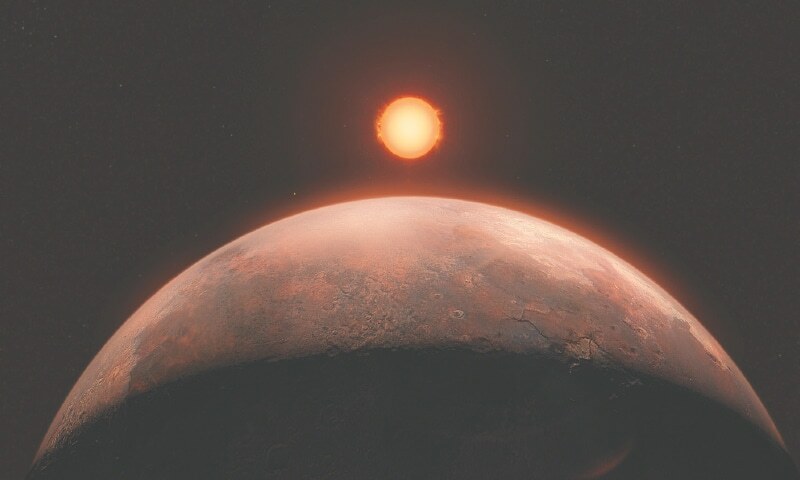
[ad_1]

PARIS: A rare exoplanet smaller than Earth has been discovered orbiting one of the closest stars to the Sun, although its surface is far too hot to sustain life, astronomers said on Tuesday.
The planet orbits Barnard’s Star, which is just six light years away, according to observations made over five years by the Very Large Telescope in the Chilean desert.
The astronomers were looking for planets outside our Solar System which are in the “Goldilocks zone” — where it is neither too hot nor too cold for liquid water, which is considered an essential ingredient for extra-terrestrial life.
The newly discovered exoplanet, dubbed Barnard b, is not in this habitable zone. It is 20 times closer to its red dwarf star than Mercury is to our Sun. A year on the planet lasts just three Earth days.
Its surface temperature is a sizzling 125 degrees Celsius (257 degrees Fahrenheit), according to a new study describing the discovery. “Barnard b is one of the lowest-mass exoplanets known and one of the few known with a mass less than that of Earth,” said Jonay Gonzalez Hernandez, a researcher at Spain’s Instituto de Astrofisica de Canarias.
“Even if the star is about 2,500C cooler than our Sun, it is too hot there to maintain liquid water on the surface,” said Gonzalez Hernandez, the lead author of the new study in the Astronomy and Astrophysics journal.
Barnard’s Star is located in the constellation Ophiuchus. After the three stars in the Alpha Centauri system, 4.2 light years away, it is the closest to our Sun.
It is also a target for exoplanet hunters because it orbits a red dwarf star. Red dwarfs are significantly colder than other stars.
Published in Dawn, October 2nd, 2024
[ad_2]
Source link






